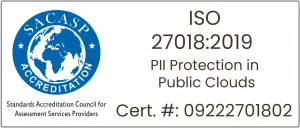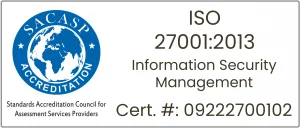Remittance touches lives from a migrant worker to international businesses, touching several lives and altering their way of life. The money transfer services market is expanding rapidly, projected to grow from $36.35 billion in 2024 to $42.22 billion in 2025, with a 16.1% compound annual growth rate (CAGR). The need for efficient, and cost-effective money transfer services was rising, and paved the way for several Money Transfer Operators to dominate the market. Larger MTOs and industry giants often grapple with smaller MTOs with higher operational costs, regulatory complexities, and limited access to technology.
Fuelling the growth of remittance, several small MTOs carved a niche for themselves, in the competitive landscape, and focused on enhancing their offerings. Smaller MTOs can thrive by targeting niche markets, offering localised services, and leveraging digital innovations like stablecoin-based settlements and open banking. Embracing alternative payment models and real-time processing enhances competitiveness in the evolving remittance landscape. By targeting specific corridors, leveraging community-based remittance models, and adopting agile strategies, these operators have managed to establish a strong foothold. Their success is a testament to their ability to adapt, innovate, and build trust among their customer base, enabling them to compete effectively against industry giants while driving the remittance sector forward.
This blog will explore the various challenges smaller MTOs encounter and provide actionable strategies to help them not only survive but thrive in the cross-border payments sector. From securing better FX rates to adopting scalable technology platforms like NetRemit, we will outline the key factors that can position smaller MTOs for success in an increasingly competitive industry.
Challenges Faced by Small MTOs
Small MTOs face enormous challenges as they have to compete with larger, well-established players, which range from stringent regulatory requirements high operational costs, building customer trust, and more that can hinder growth and market penetration.
Let us in detail explore various points that hamper the growth of small MTOs:
Dominance of Larger MTOs
Large MTOs dominate the remittance industry with their extensive global infrastructure, brand recognition, and operational efficiency. Access to a vast network of banking partners, and agents allows them to offer competitive exchange rates and fees that smaller MTOs would find it challenging to match. Also, years of experience, extensive clientele along customer support would make it hard for small MTOs to match and carve a niche for themselves.
Regulatory & Compliance Hurdles
MTOs adhere to diverse regulatory compliance, ranging from international regulations—including AML and KYC—to region-specific compliance mandates and financial legislation. Ensuring compliance is essential for securing financial transactions and preventing fraud, but it can be resource-intensive to implement and monitor. Larger MTOs typically have dedicated compliance teams and automated systems, while smaller operators may need to meet these standards without compromising on quality.
Cost Factors
Running a competitive remittance operation involves high expenses in technology, licensing, compliance, and marketing. For small MTOs, investing in technology or securing multi-jurisdictional licenses can be costly. Compliance demands ongoing monitoring, staff training, and automation, adding to the financial burden. While larger MTOs can spread these costs, smaller ones face narrower profit margins, making scalability challenging.
Partnerships
Larger MTOs leverage established relationships with banks, payment gateways, and financial institutions, gaining a competitive edge in pricing and service. In contrast, smaller MTOs often struggle to form these alliances, particularly in countries with strict regulations or high entry barriers, limiting their ability to offer competitive rates and services.
Customer Trust and Security
Larger operators are perceived as more reliable and secure, while smaller ones may lack resources for advanced security measures, impacting consumer confidence. In an industry where trust is critical, gaining customer loyalty without a strong brand or security track record is difficult.
Limited Global Reach
Larger MTOs benefit from widespread agent locations, enabling them to operate at scale. In contrast, smaller operators often serve only a few regions, forcing them to focus on niche markets, which limits growth potential.
Limited Access to Technology
Smaller MTOs struggle to access advanced technologies like AI, blockchain, and real-time payment systems due to high costs and complexity. While these innovations improve transaction speed, security, and efficiency, they require significant infrastructure and expertise investments. Larger operators can afford to implement these technologies, leaving smaller MTOs reliant on outdated systems. This gap hampers their ability to compete, scale, and meet increasing customer demands for faster, more secure payments.
Other Challenges
As technologies change, and people’s expectations change, smaller MTOs go through diverse challenges that may change regularly.
Here are some of the challenges that MTOs go through:
- Intensified Competition: Smaller MTOs face increasing competition from fintech companies offering innovative digital and mobile-first solutions, which attract customers with faster, cheaper, and more convenient options.
- Lack of Digital Capabilities: Many small MTOs lack the necessary digital tools to compete effectively in a rapidly online and mobile-driven market.
- Customer Acquisition Difficulties: Limited marketing budgets hinder smaller MTOs’ ability to acquire new customers, reducing their expansion opportunities.
Strategies & Solutions to Outpace Giants
Over the years, smaller MTOs have evolved by adopting innovative strategies and technologies to stay competitive. Continuous innovation and constant adaptation to the growing requirements of the remittance industry are the lifelines.
Here are some of the strategies and solutions that strengthen smaller MTOs and help them stay competitive.
Focus on Niche Markets
Smaller MTOs can succeed by targeting underserved remittance corridors and migrant communities with culturally relevant services and local partnerships. A multi-corridor model diversifies revenue streams, reducing risks tied to economic and regulatory shifts. Growing markets like Africa, South Asia, and Latin America offer strong expansion opportunities. By serving multiple regions, MTOs can scale operations, improve liquidity, and stay competitive.
Community-Based Remittance Operations
Small MTOs can build loyalty by catering to ethnic communities with personalised, community-focused services. A local approach fosters trust, as customers prefer familiar channels that understand their cultural contexts. Tailored offerings like language support and community events further enhance this trust.
Setting Up Branch Visits (Teller Assisted Remittance)
For migrants with limited digital access, physical branches offer essential in-person remittance services. Small MTOs can cater to rural or low-skill communities by providing teller services, giving them a competitive edge in regions lacking digital infrastructure.
Mobile Remittance Services
Mobile remittance enables MTOs to serve communities directly, collecting cash and processing transactions on-site. This approach is ideal for regions with low banking access, fostering trust and customer loyalty through doorstep services. The rise of super-app models, which integrate remittance, payments, banking, and other financial services into a single platform—enhances convenience and engagement, allowing MTOs to offer a seamless, all-in-one financial ecosystem.
Securing the Best FX Rates for MTOs
Small MTOs can boost profitability by partnering with multiple currency providers and using smart hedging strategies to secure competitive FX rates. Real-time data from fintech platforms helps them make informed decisions, giving them an edge in a competitive market.
Reducing Operational Costs
Operational costs can be a significant burden for small MTOs, but there are ways to reduce them:- Shift to multi-tenant cloud solutions: Moving to cloud-based infrastructure allows small MTOs to lower their infrastructure and hosting costs by sharing resources with other businesses.
- Shared services: Utilising shared services, such as payment gateways and compliance tools, can help reduce transaction fees and overall operational overhead. By streamlining processes, small MTOs can maintain leaner operations, making them more agile and cost-efficient.
Marketing Aspects
Hyper-local marketing enables small MTOs to engage their target audience effectively and affordably. By focusing on trust, convenience, and affordability, they can build a strong community brand through social media, outreach, and local partnerships.
Competitive Pricing
Competitive and transparent pricing is crucial for customer retention. Small MTOs can differentiate themselves with lower transfer fees, flat-rate pricing, or bundled services, enhancing perceived value and accessibility for customers.
Value-Added Services
Diversifying revenue streams with value-added services like utility payments, mobile airtime top-ups, and inward remittances can enhance small MTOs’ competitiveness. By becoming one-stop financial service providers, they can boost customer loyalty and increase transaction volumes, offsetting the challenges of smaller operations.
Customer Experience (CX)
Providing an exceptional customer experience is essential for differentiating from larger operators. Features like multilingual support, intuitive interfaces, real-time transaction tracking, and personalised services enhance satisfaction, foster loyalty, and encourage repeat transactions.
Strategic Partnerships
Partnering with banks, FX providers, and third-party payment processors allows small MTOs to access better rates and advanced payment solutions. These collaborations streamline operations, reduce cross-border transaction friction, and improve service delivery, enabling smaller operators to compete more effectively.
Tech Stack
Remittance Technology as a Service (RTaaS) provides cost-effective access to advanced technologies like mobile payments, blockchain integration, and cloud solutions. By adopting RTaaS, small MTOs can enhance operational efficiency and customer experience without the high costs of developing their tech stack.
Staying Ahead of the Curve
To make considerable progress in remittances and secure their market share, MTOs must be dynamic and maintain a futuristic outlook. By embracing innovation and adapting to emerging trends, they can effectively position themselves as leading service providers. This proactive approach enables them to anticipate customer needs, leverage innovative technologies, and deliver exceptional services that meet the evolving demands of a competitive landscape.
Emerging Technologies in Cross-Border Payments
Larger MTOs leverage AI, blockchain, and embedded finance for faster, more secure transactions. Digital currencies and RTP lower costs and enhance financial inclusion. Open banking simplifies integration, expanding service reach. Alternative settlement networks, like stablecoin-based payments, enable instant, low-cost cross-border transactions.
The Importance of Speed to Market
Smaller MTOs that quickly adopt recent technologies and implement efficient strategies gain a significant edge. Avoiding delays in operational improvements such as customer onboarding, real-time FX rate integration, and automated compliance processes is crucial. Those who fail to adapt risk being outpaced by larger players investing in technology. Emphasising agility and execution speed is vital for small operators to thrive and meet evolving customer demands.
Migration to White-Label Solutions
While small MTOs transition to white-labelled solutions, they can effectively address their technological and infrastructural challenges, allowing them to concentrate on developing their core strategies. This shift not only saves time and effort but also strengthens their competitive position.
Fintechs play a crucial role in advancing the remittance industry by providing exceptional support to small service providers. NetRemit—Next Gen Remittance platform offers a comprehensive one-stop solution tailored for small MTOs and stands distinctly ahead in their remittance arena owing to their years of experience, clientele, and their keen focus to provide top-notch remittance solutions. It provides a practical approach to accessing advanced tools without the burden of heavy investment.
With its all-in-one platform featuring scalable architecture, real-time FX rate management, automated compliance tools, and robust customer management systems, NetRemit enables MTOs to deploy their services quickly and efficiently. The platform is designed to optimise operational costs, enhance customer acquisition efficiency, manage risk, and deliver a next-level remittance experience.
Use Cases or niche opportunities that smaller MTOs can tap into
Smaller MTOs can thrive by focusing on specialized markets and innovative solutions. By catering to unique customer needs, they can differentiate themselves and compete effectively in cross-border payments.
Here are those live examples:
Ethnic and Community-Based Remittances
Smaller MTOs can build strong customer loyalty by catering to specific ethnic and migrant communities. Offering language support, culturally preferred payout methods, and competitive FX rates helps differentiate services from larger players.
Freelancer and Gig Economy Payments
With the rise of remote work, freelancers and gig workers need seamless, low-cost international payments. MTOs can provide fast, cost-effective solutions tailored to digital nomads, eliminating high banking fees and delays.
B2B Cross-Border Payments for SMEs
Many small and medium enterprises (SMEs) struggle with high costs and slow settlement times for international transactions. MTOs can offer transparent pricing, multi-currency accounts, and faster settlements to support global business expansion.
Alternative Settlement Networks
Stablecoin-based cross-border payments provide a faster and more cost-effective way to settle transactions, reducing reliance on traditional banking systems. MTOs adopting blockchain solutions can enhance security, lower costs, and improve transaction speed.
Mobile Wallet and Crypto Payouts
Expanding payout options beyond traditional bank transfers—such as mobile wallets and crypto-based settlements—can improve financial inclusion, particularly in underbanked regions. This allows MTOs to tap into new customer segments and enhance service accessibility.
Wrapping Up
In an increasingly competitive cross-border payments landscape, smaller MTOs is making tremendous progress by adapting to the latest trends, and technologies. By focusing on niche markets, leveraging community-based operations, and embracing advanced technologies, small MTOs can carve out their own space.
NetRemit offers a white-labelled remittance platform designed to empower smaller MTOs with seamless third-party payment (TPP) integrations, regulatory compliance, and advanced automation. With a revenue-sharing model and no upfront cost (conditions apply), it enables a faster go-to-market strategy, eliminating the need for heavy capital investment. Its scalable infrastructure ensures operational efficiency while supporting multi-currency transactions and diverse payout options.
Explore all possible opportunities in Cross Border Payments.
Discover NetRemit Strategies for Small MTOs
Explore all possible opportunities in Cross Border Payments.
Discover NetRemit Strategies for Small MTOs
Ready to get started?
We can’t wait to show you what’s possible with NetRemit.
Related Posts
Powering the Gig Economy with Instant Cross-Border Payments
See why instant cross-border payments are essential for the gig economy, eliminating delays, high fees, and inefficiencies while boosting global workforce efficiency.
Intelligent Payment Routing (IPR) – An Essential for P2P and B2B Remittance Businesses
Maximize efficiency in P2P and B2B remittance with Intelligent Payment Routing that ensures optimal transaction routing and settlement. Know how!
Alternative payment methods: What Cross Border Payments Businesses Need to Know
Here’s what you need to know about alternative payment methods for remittances to keep up with customer demands, i.e., frictionless and more affordable than traditional methods.


















